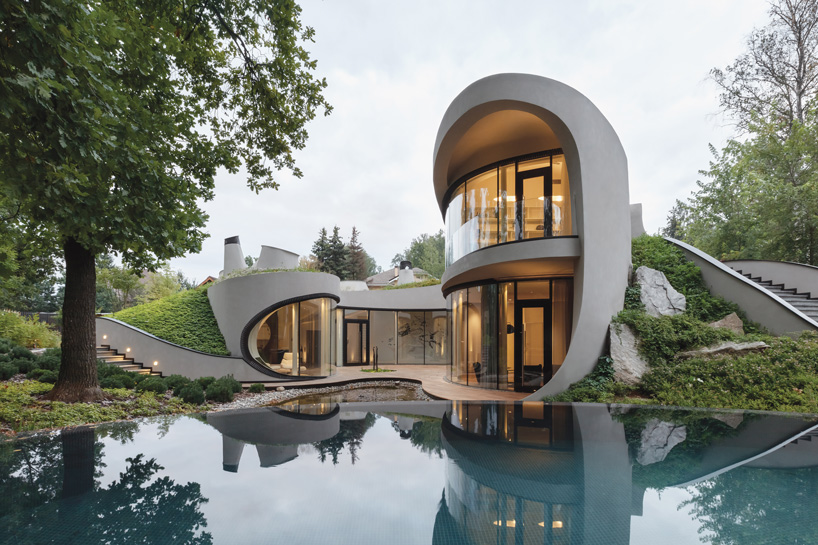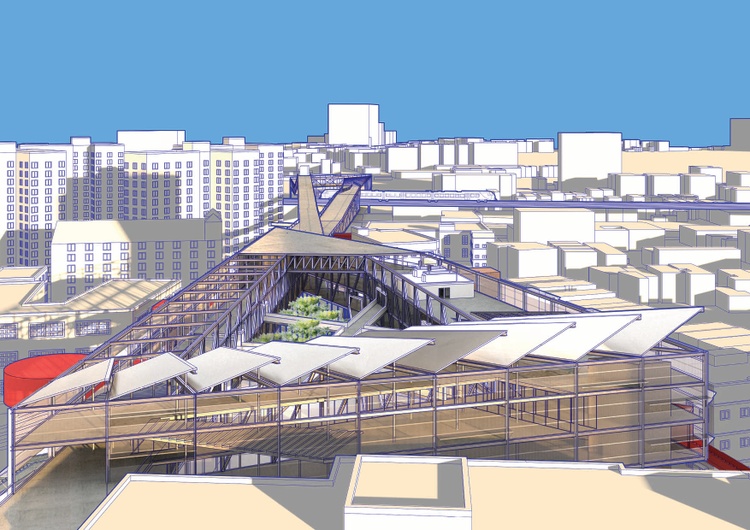Recognizing the Collaborative Refine Between Engineers and Engineers in Modern Building And Construction Projects
The joint procedure in between architects and engineers is necessary in modern construction jobs, as it harmonizes style intent with design usefulness. This partnership not just influences the aesthetic and useful aspects of a task but also plays an important function in attending to sustainability obstacles. By using reliable communication techniques and leveraging innovative modern technologies, such as Structure Information Modeling (BIM), teams can function much more cohesively. The details of this collaboration typically existing unique challenges that can hinder progression. Checking out these dynamics exposes understandings that can dramatically influence task end results and general market requirements. cda architects.
The Value of Collaboration
The collective synergy in between engineers and engineers is crucial for the effective realization of any construction project. This partnership brings together distinct experience and perspectives, allowing the combination of innovative style with functional design solutions. By collaborating, architects and engineers can make certain that a project not only fulfills visual and practical requirements yet likewise abides by safety, sustainability, and financial constraints.
Cooperation fosters a common vision, promoting the placement of objectives and expectations from the start. This placement is critical in resolving possible difficulties and mitigating dangers that can occur throughout the project lifecycle. A joint approach allows for the efficient allocation of sources, maximizing both time and expense.
The importance of cooperation includes the repetitive procedure of layout and building, where comments from engineers can educate architectural decisions, leading to even more practical and lasting designs. Conversely, architects can inspire designers to assume artistically about how to achieve structural integrity without jeopardizing creative intent. Eventually, the joint connection between architects and engineers is not simply advantageous; it is basic to the creation of high-quality, useful, and ingenious developed atmospheres that fulfill the requirements of culture.
Communication Techniques and Devices
Efficient communication methods and devices are important for promoting cooperation in between designers and engineers throughout the job lifecycle. Establishing clear networks of interaction is vital to make certain that all team participants are straightened with project objectives, timelines, and duties. Regular conferences, both in-person and online, offer possibilities for stakeholders to talk about progression, address issues, and make educated decisions.

Additionally, adopting joint interaction devices, such as Slack or Microsoft Teams, permits instantaneous messaging, file sharing, and recurring conversations, advertising an extra agile action to emerging concerns. Paper administration systems additionally play a vital role in arranging task paperwork, making sure that all staff member have accessibility to the most up to date info.
Shared Goals and Project Vision
A merged task vision works as the structure for effective cooperation between engineers and engineers (cda architects). This common vision not just straightens the initiatives of both parties yet additionally develops a typical framework for decision-making throughout the job's lifecycle. By articulating clear goals, stakeholders can efficiently browse the complexities of contemporary construction tasks, making sure that both aesthetic and useful requirements are satisfied
Establishing common goals entails open discussion and a detailed understanding of each discipline's payments. Designers normally concentrate on style intent, spatial relationships, and individual experience, while designers stress structural honesty, systems performance, and compliance with guidelines. When these viewpoints are aligned, the result is a cohesive project that sticks to both imaginative desires and technological feasibility.
Moreover, a well-defined job vision cultivates accountability among team members, motivating each individual to take ownership of their function in attaining the wanted end result. Normal check-ins and collaborative workshops can further enhance this commitment, permitting adjustments to be made as the job evolves. Ultimately, a shared vision not only improves synergy however also elevates the quality of the last deliverable, resulting in effective project completion.
The Role of Innovation
Leveraging technology has actually become crucial in enhancing cooperation between designers and engineers. The combination of innovative software tools promotes real-time interaction and details sharing, enabling teams to function much more effectively and successfully. Get the facts Building Information Modeling (BIM) attracts attention as an essential innovation, permitting both architects and designers to develop detailed 3D designs that encapsulate style intent and architectural honesty. This common visual depiction minimizes misconceptions and simplifies the decision-making procedure.
In addition, cloud-based platforms enable seamless partnership, allowing job stakeholders to accessibility and update job data from anywhere. This cultivates a culture of transparency and liability, as modifications can be tracked and examined in real-time. In addition, mobile applications more enhance communication, providing on-site groups with instant accessibility to project specifications and updates.
Arising technologies such as artificial intelligence and device learning are likewise starting to contribute in anticipating analysis, aiding groups look at here identify possible concerns prior to they arise. Eventually, the function of modern technology in architecture-engineering cooperation not only improves workflow effectiveness yet also enhances technology, leading to even more effective task end results. By accepting these technical innovations, engineers and designers can make sure a more cohesive and effective collaborative procedure throughout the building and construction lifecycle.
Situation Researches in Effective Collaborations
Various instance research studies highlight the profound impact of efficient collaborations in between engineers and designers on project end results. One remarkable example is the cooperation on the High Line in New York City, where landscape designers, designers, and metropolitan planners interacted to transform an abandoned rail line right into a vibrant public park. This multidisciplinary approach not only boosted the visual quality yet additionally made certain structural security and ecological sustainability.

The Burj Khalifa in Dubai additionally demonstrates the importance of collaborative initiatives - cda architects. The combination of style and design knowledge made it possible for the project group to attain unmatched heights while sticking to security laws and aesthetic vision
These examples underscore the value of communication, trust, and shared purposes. In today's complicated building setting, such collaborations are necessary to browsing difficulties and delivering jobs that fulfill both Read Full Article practical and visionary goals.
Final Thought
In verdict, the collaboration in between designers and designers is crucial for the success of contemporary construction projects. Efficient communication techniques, a common job vision, and the integration of innovative innovations are critical components that facilitate this partnership. By cultivating a culture of accountability and leveraging devices such as Structure Information Modeling (BIM), groups can browse job intricacies, making sure that visual, useful, and sustainability objectives are achieved. Inevitably, this harmony results in ingenious and successful project results.